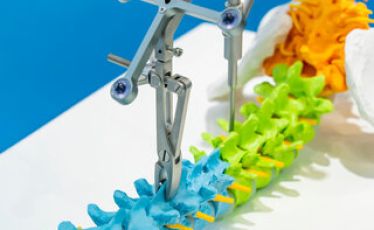+62 817-4929-054
Lower Back Pain, Causes and How to Treat It

ow back pain, or lower back pain, is pain in the waist or lower spine that may radiate to the buttocks and thighs. Not infrequently, this condition also has an effect on pain in the legs, so it can interfere with the sufferer's daily life. Check out the review of this condition, starting from symptoms, causes, to how to overcome it, in the following article.
Lower Back Pain Symptoms
Symptoms of lower back pain can vary from person to person. However, generally, the grouping of these symptom levels can be seen from the time of their appearance. When it occurs suddenly, for example when exercising or lifting weights, the symptoms are called acute. Meanwhile, if symptoms of lower back pain have lasted for more than three months, this is considered chronic.
Here are various symptoms that indicate lower back pain:
Pain or stiffness in the lower back area
Sharp or stabbing pain in the buttocks area
Aching or soreness that spreads to the buttocks area or the back of the legs
Excessive pain that occurs at certain times (such as before menstruation)
Aching or soreness that worsens after standing or sitting for too long
Pain that comes suddenly after lifting heavy objects
Lower back discomfort in certain positions (such as when bending or squatting)
Causes of Low Back Pain
Pain or discomfort in the lower back can be caused by various things, such as:
Sprains. Sprains due to lifting something too heavy or in the wrong way are the most common cause of lower back pain. The result is injury to the muscles, tendons, or ligaments which then cause pain in the lower back area. In addition, sprains may also be triggered by twisting or bending activities.
Spinal fractures. The lumbar or lower spine bones can be fractured or broken due to an accident. Certain conditions, such as osteoporosis or spondylolysis, can also increase the risk of fractures. All of these situations can lead to lower back pain.
Disc problems. The spinal discs act as cushions between the vertebrae. Due to incorrect movement or lifting too heavy a load, they can protrude from their position in the spine and press on the surrounding nerves, causing a pinched nerve. Other disc problems include herniated discs (torn discs) or degenerative disc disease (due to aging).
Bone structure problems. Abnormalities in bone structure, such as stenosis (narrowing of the spinal canal), lumbar scoliosis (sideways curvature of the spine), or spondylolisthesis (spinal displacement), can also be one of the causes of lower back pain.
Arthritis. Arthritis, or swelling and pain in one or more joints in the lower back, can also cause lower back pain.
Certain diseases or conditions. Some diseases that do not occur in the lower back area can also trigger lower back pain, such as infections, some types of cancer, chronic inflammation such as fibromyalgia, menstruation, or the second and third trimesters of pregnancy.
How to Overcome Low Back Pain
To treat lower back pain, patients may need different treatments depending on their condition. Some options for treating low back pain are:
Taking medication. This first method is usually given to patients with mild lower back pain. The doctor will prescribe pain relievers, such as acetaminophen, ibuprofen, or naproxen. In addition, the doctor may also prescribe pain relief creams that can help relieve muscle pain.
Physiotherapy or physical exercise. The second method is physiotherapy or physical exercise, which is given to patients with moderate, acute, or chronic low back pain. This method includes physiotherapy with heat, ultrasonic waves, or electrical stimulation (electrical therapy). After that, the therapist will help the patient to do physical exercises to increase the strength and flexibility of the back muscles.
Surgery. The last method is surgery for severe lower back pain due to certain factors, such as bone structure problems or certain diseases or conditions.
For some people, lower back pain may be temporary or intermittent, eliminating the need to see a doctor. If you feel that your lower back pain has been going on for too long or is starting to interfere with other body functions, immediately visit Premier Bintaro Spine Center, Premier Bintaro Hospital to get the best treatment.
Spinal treatment Service at Premier Bintaro Hospital handles various spinal problems, ranging from lower back pain, pinched nerves, bone disorders, to spinal tumors. Here, you will be treated by a team of doctors from various specialist fields, namely Orthopedic Spine Specialists, Neurology Specialists, Neurophysiology Specialists, Medical Rehabilitation Specialists, and Radiology Specialists.
Contact Centre: 1 500 908
WhatsApp Chatbot Appointment: +62 8122 2309 911
Contact Us
For information and to make appointment

dr. Ajiantoro, Sp.OT (K) Spine
Orthopedi & Traumatologi View Schedule| Loading data... |
|---|

















